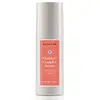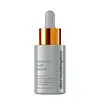What's inside
What's inside
 Key Ingredients
Key Ingredients

 Benefits
Benefits

 Concerns
Concerns

 Ingredients Side-by-side
Ingredients Side-by-side

Water
Skin ConditioningGlycerin
HumectantPropanediol
SolventSodium Ascorbyl Phosphate
AntioxidantAscorbic Acid
AntioxidantGlutathione
Ananas Sativus Fruit Extract
Skin ConditioningCarica Papaya Fruit Extract
Skin ConditioningMangifera Indica Fruit Extract
Skin ConditioningTerminalia Ferdinandiana Fruit Extract
AntioxidantPleiogynium Timoriense Fruit Extract
Skin ConditioningPodocarpus Elatus Fruit Extract
Skin ConditioningAloe Barbadensis Leaf Juice
Skin ConditioningSodium Hyaluronate
HumectantCarbomer
Emulsion StabilisingTocopheryl Acetate
AntioxidantPhenoxyethanol
PreservativeCaprylyl Glycol
EmollientCitric Acid
BufferingHydroxyethylcellulose
Emulsion StabilisingSodium Hydroxide
BufferingBeta-Glucan
Skin ConditioningPotassium Sorbate
PreservativeHexylene Glycol
EmulsifyingSorbitol
HumectantXanthan Gum
EmulsifyingAlgin
MaskingBenzoic Acid
MaskingSorbic Acid
Preservative1,2-Hexanediol
Skin ConditioningSodium Benzoate
MaskingDisodium Phosphate
BufferingGold
Cosmetic ColorantPolysorbate 60
EmulsifyingSodium Phosphate
BufferingWater, Glycerin, Propanediol, Sodium Ascorbyl Phosphate, Ascorbic Acid, Glutathione, Ananas Sativus Fruit Extract, Carica Papaya Fruit Extract, Mangifera Indica Fruit Extract, Terminalia Ferdinandiana Fruit Extract, Pleiogynium Timoriense Fruit Extract, Podocarpus Elatus Fruit Extract, Aloe Barbadensis Leaf Juice, Sodium Hyaluronate, Carbomer, Tocopheryl Acetate, Phenoxyethanol, Caprylyl Glycol, Citric Acid, Hydroxyethylcellulose, Sodium Hydroxide, Beta-Glucan, Potassium Sorbate, Hexylene Glycol, Sorbitol, Xanthan Gum, Algin, Benzoic Acid, Sorbic Acid, 1,2-Hexanediol, Sodium Benzoate, Disodium Phosphate, Gold, Polysorbate 60, Sodium Phosphate
Water
Skin ConditioningGlycerin
HumectantPropanediol
SolventTranexamic Acid
AstringentButylene Glycol
HumectantPEG-40 Hydrogenated Castor Oil
EmulsifyingAminopropyl Ascorbyl Phosphate
AntioxidantHydroxyacetophenone
AntioxidantDipotassium Glycyrrhizate
HumectantLactic Acid
BufferingErgothioneine
AntioxidantGlycine Soja Oil
EmollientHelianthus Annuus Seed Oil
EmollientCitrus Nobilis Peel Oil
MaskingRicinus Communis Seed Oil
MaskingChlorella Vulgaris Extract
Skin ConditioningDaucus Carota Sativa Root Extract
Skin ConditioningHydrolyzed Jojoba Esters
Skin ConditioningCichorium Intybus Root Extract
MaskingOpuntia Ficus-Indica Stem Extract
Skin ConditioningCitrus Aurantium Dulcis Fruit Extract
MaskingCitrus Paradisi Fruit Extract
Skin ConditioningCitrus Aurantifolia Oil
CleansingCyamopsis Tetragonoloba Gum
Emulsion StabilisingTocopherol
AntioxidantSodium PCA
HumectantFructooligosaccharides
HumectantBioflavonoids
Skin ConditioningGlycoproteins
Skin ConditioningGlycine
BufferingSqualane
EmollientAscorbyl Methylsilanol Pectinate
AntioxidantCaprylyl Glycol
EmollientBeta-Carotene
Skin ConditioningCystine
MaskingPentylene Glycol
Skin ConditioningMannitol
HumectantErgosterol
Skin ConditioningXanthan Gum
EmulsifyingMethylpropanediol
Solvent1,2-Hexanediol
Skin ConditioningTetrasodium Glutamate Diacetate
Carbomer/Papain Crosspolymer
Phytic Acid
Citric Acid
BufferingSodium Hydroxide
BufferingAcacia Senegal Gum
MaskingPolyacrylate Crosspolymer-6
Emulsion StabilisingAlgin
MaskingDisodium Phosphate
BufferingLimonene
PerfumingCitrus Species Peel Extract
PerfumingWater, Glycerin, Propanediol, Tranexamic Acid, Butylene Glycol, PEG-40 Hydrogenated Castor Oil, Aminopropyl Ascorbyl Phosphate, Hydroxyacetophenone, Dipotassium Glycyrrhizate, Lactic Acid, Ergothioneine, Glycine Soja Oil, Helianthus Annuus Seed Oil, Citrus Nobilis Peel Oil, Ricinus Communis Seed Oil, Chlorella Vulgaris Extract, Daucus Carota Sativa Root Extract, Hydrolyzed Jojoba Esters, Cichorium Intybus Root Extract, Opuntia Ficus-Indica Stem Extract, Citrus Aurantium Dulcis Fruit Extract, Citrus Paradisi Fruit Extract, Citrus Aurantifolia Oil, Cyamopsis Tetragonoloba Gum, Tocopherol, Sodium PCA, Fructooligosaccharides, Bioflavonoids, Glycoproteins, Glycine, Squalane, Ascorbyl Methylsilanol Pectinate, Caprylyl Glycol, Beta-Carotene, Cystine, Pentylene Glycol, Mannitol, Ergosterol, Xanthan Gum, Methylpropanediol, 1,2-Hexanediol, Tetrasodium Glutamate Diacetate, Carbomer/Papain Crosspolymer, Phytic Acid, Citric Acid, Sodium Hydroxide, Acacia Senegal Gum, Polyacrylate Crosspolymer-6, Algin, Disodium Phosphate, Limonene, Citrus Species Peel Extract
 Reviews
Reviews

Ingredients Explained
These ingredients are found in both products.
Ingredients higher up in an ingredient list are typically present in a larger amount.
1,2-Hexanediol is a synthetic liquid and another multi-functional powerhouse.
It is a:
- Humectant, drawing moisture into the skin
- Emollient, helping to soften skin
- Solvent, dispersing and stabilizing formulas
- Preservative booster, enhancing the antimicrobial activity of other preservatives
Algin is brown algae. Algae is an informal term for a group of aquatic organisms that can photosynthesize. It is estimated there are at least 30,000 types of Algae.
Algae contains antioxidants. Antioxidants help fight free-radicals. Free-radicals are molecules that may damage your skin cells, such as pollution.
Caprylyl Glycol is a humectant and emollient, meaning it attracts and preserves moisture.
It is a common ingredient in many products, especially those designed to hydrate skin. The primary benefits are retaining moisture, skin softening, and promoting a healthy skin barrier.
Though Caprylyl Glycol is an alcohol derived from fatty acids, it is not the kind that can dry out skin.
This ingredient is also used as a preservative to extend the life of products. It has slight antimicrobial properties.
Learn more about Caprylyl GlycolCitric Acid is an alpha hydroxy acid (AHA) naturally found in citrus fruits like oranges, lemons, and limes.
Like other AHAs, citric acid can exfoliate skin by breaking down the bonds that hold dead skin cells together. This helps reveal smoother and brighter skin underneath.
However, this exfoliating effect only happens at high concentrations (20%) which can be hard to find in cosmetic products.
Due to this, citric acid is usually included in small amounts as a pH adjuster. This helps keep products slightly more acidic and compatible with skin's natural pH.
In skincare formulas, citric acid can:
While it can provide some skin benefits, research shows lactic acid and glycolic acid are generally more effective and less irritating exfoliants.
Most citric acid used in skincare today is made by fermenting sugars (usually from molasses). This synthetic version is identical to the natural citrus form but easier to stabilize and use in formulations.
Read more about some other popular AHA's here:
Learn more about Citric AcidDisodium Phosphate is a water-soluble powder used as a pH adjuster.
Glycerin is already naturally found in your skin. It helps moisturize and protect your skin.
A study from 2016 found glycerin to be more effective as a humectant than AHAs and hyaluronic acid.
As a humectant, it helps the skin stay hydrated by pulling moisture to your skin. The low molecular weight of glycerin allows it to pull moisture into the deeper layers of your skin.
Hydrated skin improves your skin barrier; Your skin barrier helps protect against irritants and bacteria.
Glycerin has also been found to have antimicrobial and antiviral properties. Due to these properties, glycerin is often used in wound and burn treatments.
In cosmetics, glycerin is usually derived from plants such as soybean or palm. However, it can also be sourced from animals, such as tallow or animal fat.
This ingredient is organic, colorless, odorless, and non-toxic.
Glycerin is the name for this ingredient in American English. British English uses Glycerol/Glycerine.
Learn more about GlycerinPropanediol is an all-star ingredient. It softens, hydrates, and smooths the skin.
It’s often used to:
Propanediol is not likely to cause sensitivity and considered safe to use. It is derived from corn or petroleum with a clear color and no scent.
Learn more about PropanediolSodium Hydroxide is also known as lye or caustic soda. It is used to adjust the pH of products; many ingredients require a specific pH to be effective.
In small amounts, sodium hydroxide is considered safe to use. However, large amounts may cause chemical burns due to its high alkaline.
Your skin has a natural pH and acid mantle. This acid mantle helps prevent harmful bacteria from breaking through. The acid mantle also helps keep your skin hydrated.
"Alkaline" refers to a high pH level. A low pH level would be considered acidic.
Learn more about Sodium HydroxideWater. It's the most common cosmetic ingredient of all. You'll usually see it at the top of ingredient lists, meaning that it makes up the largest part of the product.
So why is it so popular? Water most often acts as a solvent - this means that it helps dissolve other ingredients into the formulation.
You'll also recognize water as that liquid we all need to stay alive. If you see this, drink a glass of water. Stay hydrated!
Learn more about WaterXanthan gum is used as a stabilizer and thickener within cosmetic products. It helps give products a sticky, thick feeling - preventing them from being too runny.
On the technical side of things, xanthan gum is a polysaccharide - a combination consisting of multiple sugar molecules bonded together.
Xanthan gum is a pretty common and great ingredient. It is a natural, non-toxic, non-irritating ingredient that is also commonly used in food products.
Learn more about Xanthan Gum